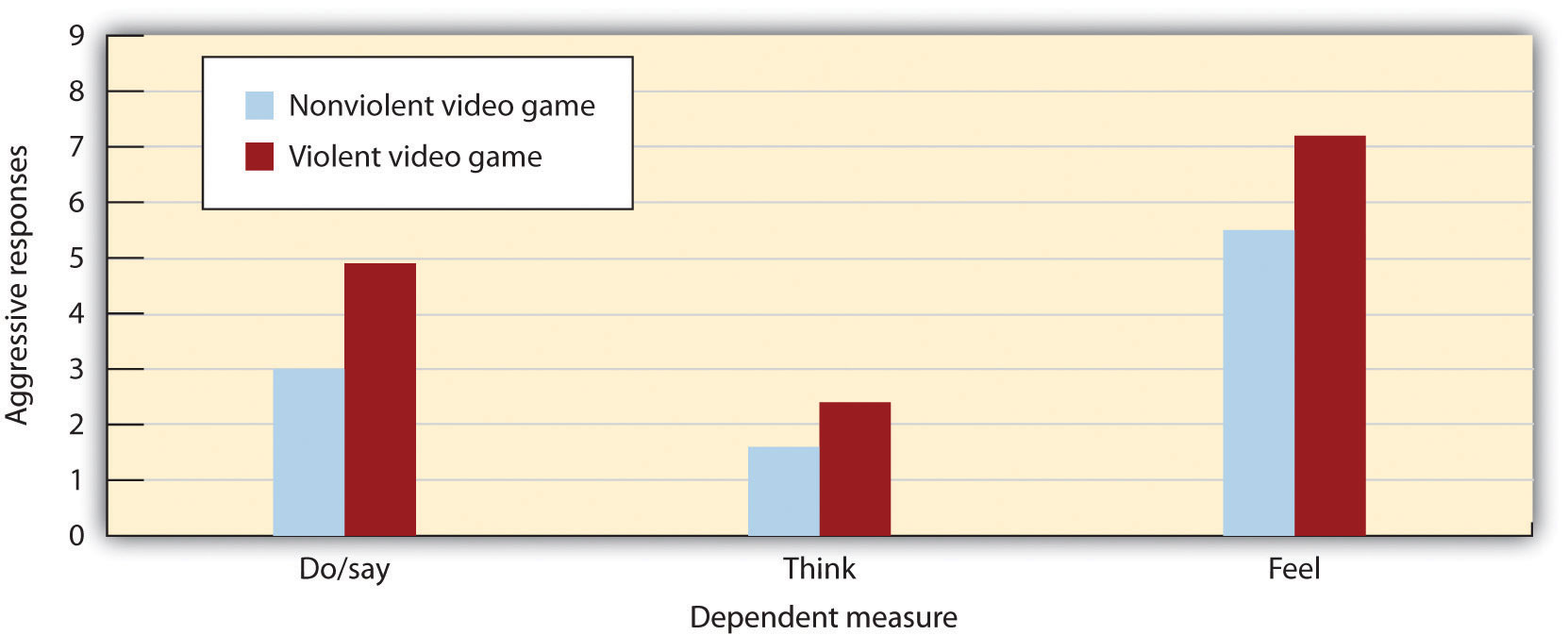Worldwide, the average child watches over three hours of television every day, and these programs contain both physical and nonphysical aggression at the rate of about three violent acts per minute (Archer & Coyne, 2005; Groebel, 1999; Shanahan, Hermans, & Hyman, 2003). Furthermore, the amount, intensity, and graphic nature of the violence that children view continues to escalate every year. According to a study of programming from 1993 to 2001 on six major Canadian television networks, depictions of physical violence increased by 378% over this period, to the tune of about 40 acts of violence per hour (Paquette, Gosselin, & DeGuise, 1997). These programs are punctuated with television advertisements, approximately 13% of which also contain violent content (Jones & Cunningham, 2008). At the same time, children are also exposed to violence in movies and video games, as well as in popular music and music videos that include violent lyrics and imagery.
Given your knowledge about the importance of the social situation, it might not surprise you to hear that these situational exposures to violence have an effect on aggressive behavior, and in fact they do. The evidence is impressive and clear: the more media violence people, including children, view, the more aggressive they are likely to be (Anderson et al., 2003; Cantor et al., 2001). The relation between viewing TV violence and aggressive behavior is about as strong as the relation between smoking and cancer or between studying and academic grades (Bushman & Huesmann, 2010). If you watch a lot of violence, you are likely to become aggressive!

The evidence is so clear because it has come through the accumulation of many studies conducted over many years, using a variety of research designs. These studies have included laboratory and field experiments, as well as both cross-sectional and longitudinal correlational studies, and have included people from many different cultures. In the correlational studies, many potential common-causing variables, such as intelligence, family background, socioeconomic status, and personality, have been controlled for. The potential for reverse causation has been eliminated through studies that have shown that viewing violence at a young age tends to predict aggressive behavior when the child is older, more than the other way around. Furthermore, laboratory studies in which people have been randomly assigned to view either violent or nonviolent material have shown the same results (Paik & Comstock, 1994; Zillman & Weaver, 1999). In one recent study, Coyne, Archer, and Eslea (2004) found that adolescents who viewed either physical or nonphysical aggression were subsequently more likely to behave in an aggressive manner than those who viewed no aggression.
Research Focus: The Effects of Violent Video Games on Aggression
It is clear that watching TV violence can increase aggression, but what about violent video games? These games are more popular than ever and also more graphically violent. Children spend countless hours playing video games, many of which involve engaging in extremely violent behaviors. The games often require the player to take the role of a violent person, to identify with the character, to select victims, and, of course, to kill people. These behaviors are rewarded by winning points and moving on to higher levels and are repeated over and over. Again, the answer is clear—playing violent video games leads to aggression. A meta-analysis (Anderson & Bushman, 2001) that reviewed 35 research studies that had tested the effects of playing violent video games on aggression. The studies included both experimental and correlational studies, with both male and female participants in both laboratory and field settings. They found that exposure to violent video games is significantly linked to increases in aggressive thoughts, aggressive feelings, psychological arousal (including blood pressure and heart rate), as well as aggressive behavior. Furthermore, playing more video games was found to relate to less altruistic behavior. Bushman and Anderson (2002) directly assessed the effects of viewing violent video games on aggressive thoughts and behavior. In one of their studies, participants were randomly assigned to play either a violent or a nonviolent video game for 20 minutes. Each participant played one of four violent video games (Carmageddon, Duke Nukem, Mortal Kombat, or Future Cop) or one of four nonviolent video games (Glider Pro, 3D Pinball, Austin Powers, or Tetra Madness). Participants then read a story—for instance, this one about Todd—and were asked to list 20 thoughts, feelings, and actions about how they would respond if they were Todd:
Todd was on his way home from work one evening when he had to brake quickly for a yellow light. The person in the car behind him must have thought Todd was going to run the light because he crashed into the back of Todd’s car, causing a lot of damage to both vehicles. Fortunately, there were no injuries. Todd got out of his car and surveyed the damage. He then walked over to the other car.As you can see in Figure 9.9, the students who had played one of the violent video games responded much more aggressively to the stories than did those who played the nonviolent games. In fact, their responses were often extremely aggressive. They said things like “Call the guy an idiot,” “Kick the other driver’s car,” “This guy’s dead meat!” and “What a dumbass!” Other studies have found similar results (Konijn, Nije Bijvank, & Bushman, 2007), and longitudinal studies in the United States and in Japan have shown that playing violent video games predicts aggressive behaviors and thoughts several months later, even after controlling for initial level of aggression (Anderson, Gentile, & Buckley, 2007; Anderson et al., 2008).
- 15019 reads






